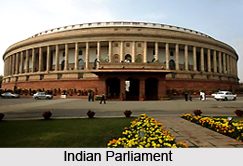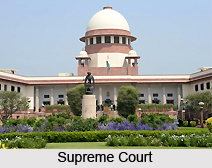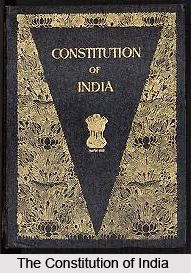 Salient features of Indian constitution reveal its unique formulation. The constitution of India was complied on the acquisition of Independence and there are a number of features which are typical to a document of political declaration of a newly independent state. The various features of the Indian constitution are briefly discussed below.
Salient features of Indian constitution reveal its unique formulation. The constitution of India was complied on the acquisition of Independence and there are a number of features which are typical to a document of political declaration of a newly independent state. The various features of the Indian constitution are briefly discussed below.
Lengthiest Constitution
The Indian Constitution is the lengthiest one comprising of 395 Articles divided into 22 parts and 9 Schedules. It is a detailed document in which the functions of the Legislative, Executive and Judicial organs both at the Centre and in the States have been elaborately prescribed.
Secular State
A salient feature of the Constitution was its emphasis on secularism. People are not discriminated on the basis of religion. All citizens enjoy freedom of worship and possess equal civil and political rights irrespective of their religious beliefs. The State does not have a religion of its own.
Fundamental Rights
The Constitution provides a number of fundamental rights which are noted under six categories. They are right to equality, right to freedom, right against exploitation, right to freedom of religion, cultural and educational rights for minorities and the right to seek constitutional remedies. The Supreme Court and High Courts are empowered to safeguard these fundamental rights.
Directive Principles of State Policy
The Constitution enumerates several Directive Principles of State Policy which are intended to be implemented by the Centre and State Governments in due course. They are aimed at the promotion of the material and moral well-being of the people and to transform India into a Welfare State. The Directive Principles cannot be enforced by the law courts. They are only some guidelines issued to the future governments.
 Federal in Form and Unitary in Essence
Federal in Form and Unitary in Essence
Another salient feature of the Indian Constitution is that it has provided a system of government which is federal in form but unitary in essence and spirit. It has three essential requisites of a federation, a written and rigid constitution, distribution of powers between the Centre and the States, and a Supreme Court. But in essence, the Indian Constitution is unitary in character. The Union Government exercises almost unquestioned control over the States in legislative, financial and administrative spheres. This control becomes tighter in times of emergencies.
Parliamentary Form of Government
The Constitution provides a Parliamentary form of Government in the Centre as well as in the States. The Indian President and the State Governor are mere Constitutional heads. The Cabinet exercises the executive powers and is responsible to the concerned legislature. The Cabinet can be removed from office by a vote of no-confidence in the legislature even before its term of office is over.
Judicial Review
Another significant feature of the Indian Constitution is the provision for Judicial Review. This means that the Supreme Court of India is empowered to declare a law passed by the Indian Parliament as null and void if it is inconsistent with the Fundamental Rights. In the case of the Acts passed by the State Legislatures, this power is vested with the concerned High Courts.
Rigid as well as Flexible
The Indian Constitution is rigid in some respects and flexible in other respects.
Independent Judiciary
The Constitution has made the judiciary independent of the executive. The President of India appoints the judges of the Supreme Court and High Courts after consulting the Chief Justice of India. The judges are free from the executive control. Their tenure is guaranteed and their salaries are fixed by the Constitution.
Fundamental Duties
 Another salient feature of the Indian Constitution is the incorporation of the Fundamental duties of citizens. The 42nd amendment of 1976 added Article 51-A to the Constitution requiring all citizens to fulfil 10 duties. Failure to perform these duties does not carry any penalty, yet the citizens are expected to follow them.
Another salient feature of the Indian Constitution is the incorporation of the Fundamental duties of citizens. The 42nd amendment of 1976 added Article 51-A to the Constitution requiring all citizens to fulfil 10 duties. Failure to perform these duties does not carry any penalty, yet the citizens are expected to follow them.
Adult Franchise
Adult suffrage is an important feature of the Constitution. All the adults who attained 21 years of age became eligible to exercise their franchise. Thereby, nearly 50 per cent of the population was enrolled as voters.
Bicameral Legislature
Bicameral Legislature was constituted at the Centre as well as in some of the States. The members of the Lower House are directly elected by the people on the basis of the adult franchise. The life of the lower House is 5 years unless it is dissolved earlier. The members of the Upper House are indirectly elected for a period of 6 years. The Upper House is a permanent body, one third of its members retiring every two years.






